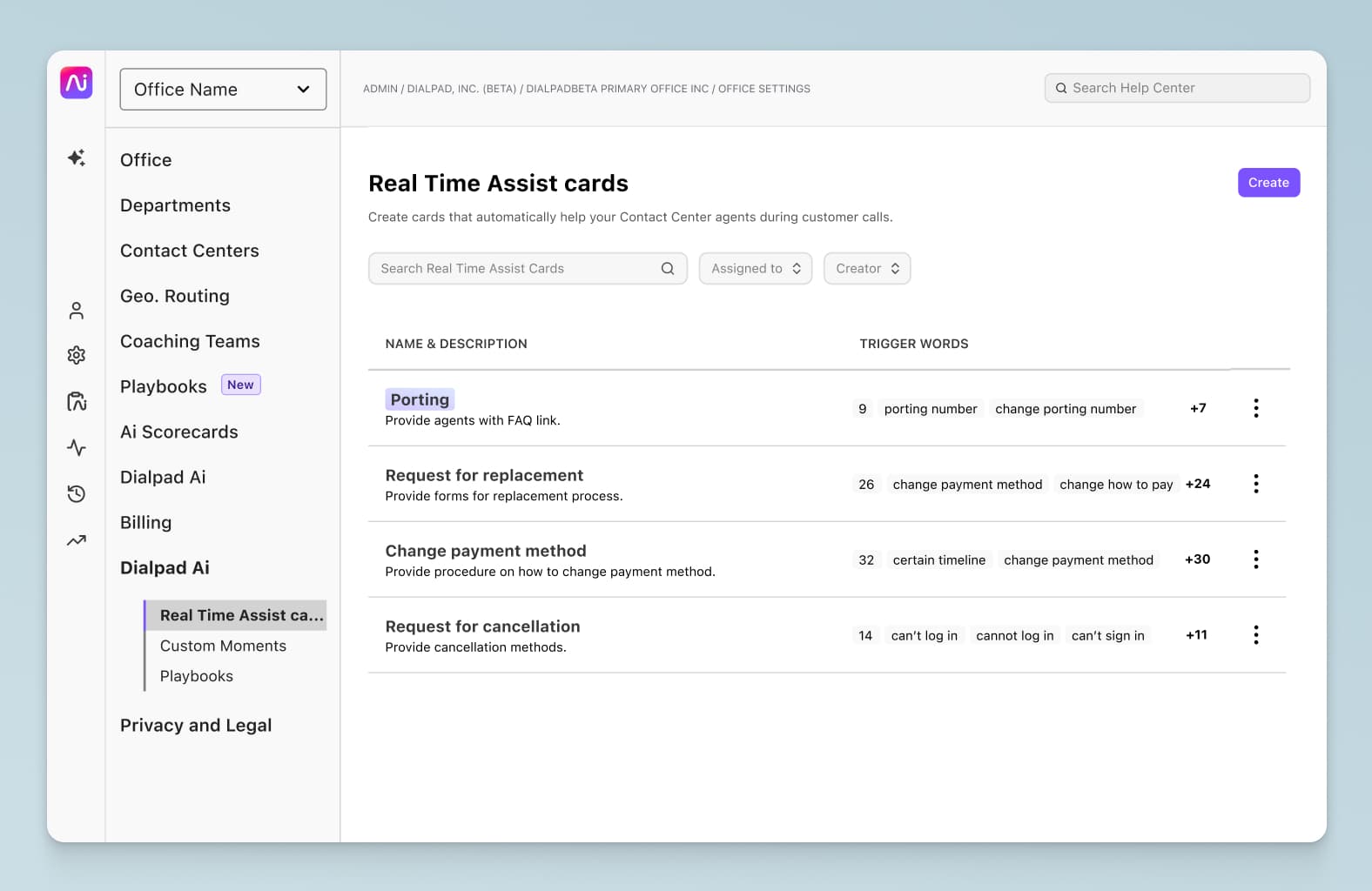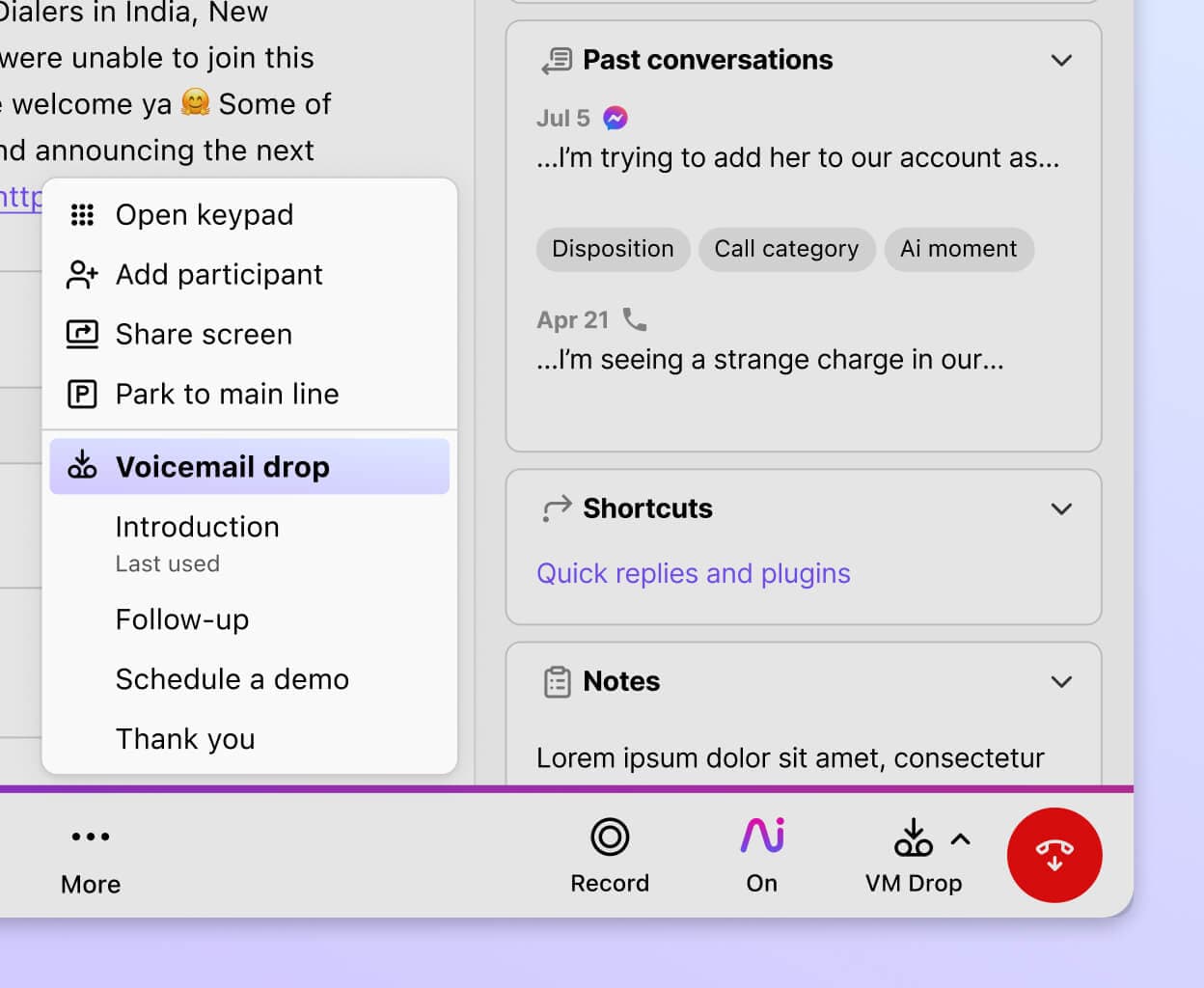The best cold calling tips: An SDR’s guide

Sales Development Representative

Tags
Share
Cold calling can be an intimidating task. You’re bracing yourself for rejection as you’re dialing each phone number, and often, you’re not even talking to the decision-maker on your first call—you have to get past a gatekeeper.
As an SDR, I do cold calling every day—and in this guide, I’ll show you what’s helped me crush my numbers month after month and led to more consistently successful cold calling.
But first, before we get to the cold calling tips, let’s get some common misconceptions about this method of sales prospecting out of the way.
What people misunderstand about cold calling
Most people are familiar with the definition for a cold call—it’s a phone call to a prospect who’s not expecting the call. There’s typically no previous contact, and the prospect didn’t request the call. (Cold emails are essentially the same thing, but with emails instead of calls.)
Many people think this means that you’re doing outreach to prospects who’ve never heard of your business. Not true! Some of the most successful cold calls are made after a prospect has clicked an ad or visited your company’s website. (For example, there are automations that will ping your sales reps when a new prospect is browsing your website.)
Using a data-driven approach like this helps with qualifying prospects more quickly too, and is a good way to make more effective cold calls.
The other misunderstanding about cold calls that I often see is that some people think they’re just sales pitches. Not necessarily! Often, a good cold call is more like a conversation with the prospect where you’re genuinely looking to learn more about the prospect’s business and pain points. What issues do they have and how can your product or service solve them?
As an example, for SDRs, the objective of a cold call is not to make a sale, but to move the prospect on to the next stage of your sales process, which could be a more in-depth conversation with an AE (Account Executive) that involves more stakeholders.
How to make successful cold calls: Preparation before the call
1. Just looking up your contact in Salesforce isn’t actual research
Research should be a no-brainer. But when you’re making 50+ calls a day, deep-diving into each contact isn’t possible. (Using the right cold calling software can help.)
To make sure you’re spending time on the right contacts, leverage your CRM to look into your target’s role, company, and any previous activity. Our own sales team uses Dialpad to make cold calls, and its Salesforce power dialer integration (Dialpad also integrates with HubSpot and Zoho CRM, among other CRMs) is great because you can make more dials and move onto the next call quickly—while getting all your prospect information right in the same window:

If these fit your key target personas (for example, if they’re a VP and above), spend the extra time researching and building out a message that resonates with their needs. Being prepared will help you get more out of your outreach and not waste any connections that you do make. Use social media and some of the websites below to help you discover more about your prospect or key decision maker.
LinkedIn: Groups, current and previous job, shared contacts, recent activity
Twitter: Both the prospect and their company (recent posts and messaging)
Company website: Press and media release pages.
SEC Website: (If prospect works for a public company) Company 10-Qs (quarterly report) and 10-Ks (annual report), especially the management’s discussion and analysis of financial condition and results of operations (section 2).
Angellist: (If prospect works for a startup) funding history, including the timing, value, and participants in each round; past and present employees; advisory team; founders; products and launches; open jobs.
Crunchbase: Prospect's acquisition history, funding rounds, investors, team members, news, timeline, competitors, former employees, customers, partners, sub-organizations, board members and advisors, and other related details.
2. Organize your cold call script
To make a successful cold call, you’ll need a well-planned sales script. Your company or sales manager will typically give you a template to work off of, but I’d recommend customizing your cold calling scripts to maximize your chances of grabbing your prospect’s attention and making sure your pitch resonates with them.
Try not to rigidly stick to a script or template. Instead, leave room for open-ended questions and be ready to pivot depending on how your prospect responds.
One great thing about Dialpad is that we can create Real-Time Assist (RTA) cards with talking points about different topics and set them to pop up on our screens when those keywords are spoken. For example, if we know that prospects tend to say “it’s a bad time” as an excuse when they get a cold call, we can create an RTA card with notes on how to get around this objection and set it to trigger whenever “bad time” is spoken on a call!

Open with your reasons for calling. This will help you direct the conversation toward your value proposition.
Address the prospects’ pain points and use your research to show you understand their business. Ask open-ended questions about the issues your prospect is facing. If you can, try to get a sense of what the decision-making process looks like for their team or business. (Will they need to loop in other teams who might be interested in your product or service? Is there potentially a lot of red tape to navigate?)
👉 Dialpad tip:
You can try to build rapport or make small talk as well if you think the situation calls for it, but generally I try not to waste the other person’s time, especially if it’s a cold call that they’re not expecting.
3. Have the right tools
I mentioned the benefit of having a power dialer or cold calling software above, and being equipped with tools like that is definitely a major boost for sales reps.
Often, sales software like these come with other nifty features too. For example, Dialpad Ai Sales Center also comes with a voicemail drop feature, which lets us pre-record a message to drop into the call when we hit a prospect’s voicemail:

When you’re dialing hundreds of people and leaving voicemails for a good chunk of them, this can be a huge timesaver because you don’t have to recite the same voicemail message every time. What used to take a minute or two now takes literally a second, and it can really add up.
4. Know your opening statement
First impressions are an important part of how to make effective cold calls, and you’ve got just a few seconds to get your prospect (who you’re talking to for the first time!) bought into this conversation.
You have to be focused and ready to introduce yourself and your company, and more importantly, talk about why your prospect should stay on the line with you. Think of it as an essential step in your sales call planning.
5. Expect rejections
Whether you’re making outbound phone calls or emails (or social media), you’re going to hear sales objections. Rejections will happen. In fact, you will 100% end up with more rejections than successes. As a cold caller, dealing with the emotional effect of rejection can be one of the hardest things.
My best sales tip here is just to acknowledge that rejection is a part of the process. Not all rejections are equal either—sometimes a client just isn’t a fit for your product or just isn’t in their buying cycle, while other times, maybe you mishandled an objection.
Being able to differentiate these scenarios and learn from your mistakes is an important skill that’ll help you focus your energy and optimize your success rates (instead of dwelling on rejections).
For sales leaders, don’t neglect sales call reporting data from rejections—they can help you identify development opportunities in your reps. For example, with Dialpad we can create Custom Moments to track how often certain keywords (or say, rejection reasons) are spoken on sales calls. Say we want to see how often pricing gets brought up. We can just create a Custom Moment to track every time “price” or “pricing” is spoken on a call—and dig into the call recordings or transcripts for more context if needed:

4 cold call techniques to use during the call
1. Find the pain points regarding their current setup
This will let you add value to your pitch later in the call. One of my favorite open-ended questions is, “Is there anything you wish your current setup could do?”
It’s a good way to get clients to open up and give you opportunities to assert your product’s value in a more natural way. Using social proof is a powerful way of reinforcing this value too—for example, by telling the success story of one of your other clients in the same industry as your prospect. Bonus points if they solved a similar problem with your product!
2. Give the prospect time to respond, don’t be that pushy salesperson!
Don’t be that pushy salesperson. Trying to move your prospect through your sales script as fast as possible won’t help you, especially if you’re asking the prospect more complex questions and getting them to think about their current processes and what they’re not happy with.
Those are tough questions! Give them the time they need to answer you.
This will give you more information from your potential customer, which will give you more opportunities to empathize and add value.
3. Frame your questions carefully
Every sentence you say has to be efficient and fulfill a certain need. You have limited time when you’re on a cold call. This also goes for nuances in how you frame your questions—it may seem nitpicky, but the details can make a big difference here.
For example, instead of asking informational questions, verify that your research is correct by confirming with the prospect. Asking “How many employees does your company have?” is just requesting information (that you should already know). Saying, “I see you have around 500 employees, is that correct?” shows that you did your research on the client's business while engaging and involving them in the conversation.
4. Don’t get too in the weeds on product knowledge (save room for the discovery call)
There’s a lot of prep work involved to make an effective cold call, but remember that your goal is not necessarily to close the deal. It depends on your sales org’s structure, but for many cold callers, your goal is simply to get the prospect interested enough to move them forward to the next stage.
The best sales professionals understand their goal clearly and are laser-focused on completing that specific goal. So, if you feel overwhelmed or that you have way too much to remember or learn, it might be helpful to re-examine your goal—are you trying to do too much, or getting distracted by small tasks that aren’t actually required of you at this point?
Best cold calling strategies: What to do after the sales call
Your cold calling work isn’t done when you hang up! Here’s how to nail the after-call work.
1. Take notes on the call in Salesforce
Make sure you log your notes in detail—things like what you discussed, any pain points the prospect brought up, if there’s a follow-up needed, and so on.
Keeping up with hygiene is important here because this will help with follow-up calls—especially if you go on PTO and need a teammate to pick up the conversation while you’re out!
For example, we can use the call tagging or disposition feature in Dialpad to assign tags like interested and not interested to sales calls:

2. Ensure appropriate follow-up if the prospect expresses interest at a later time
No matter how good your memory is, this step is crucial to your cold calling strategy. Prospects aren’t going to follow up with you (even if they expressed interest).
If they want a follow-up, great! Confirm that you’ll send them a message or call them after however many weeks or months, then put that in your calendar. Better yet, you could ask them if it’s alright to send them the calendar invite or reminder too so that it’ll show up in their calendar. (Not everyone will be cool with this, but consider it an extra level of security to make sure you get a response later.)
You’ll probably want to have a follow-up cadence as well, if they’re too busy or don’t respond to your follow-up for whatever reason. (Generally, I’ll put a second or third follow-up every few days after the first one, in case they don’t reply.)
3. If a prospect advises you to reach out to another contact, name drop them
The caveat here: Make sure you get that prospect's permission to name-drop them when you’re reaching out to the person they’re recommending!
This can lend you more credibility when you’re talking to the new person. (This is a great example of something that should be logged to a prospect’s profile in your CRM.)
Ready to put these cold calling tips to work?
Putting all these cold calling tips into practice will take time. There’s a balance to find between call volumes and call quality. Don’t be afraid to look at tech solutions to automate processes and make your life easier.
At the end of the day, the worst thing a prospect can do is say no or hang up. Get a cold call right, on the other hand, and it might deliver that $100k opportunity.
See how Dialpad Ai Sales Center works
Book a product walkthrough with our team!








